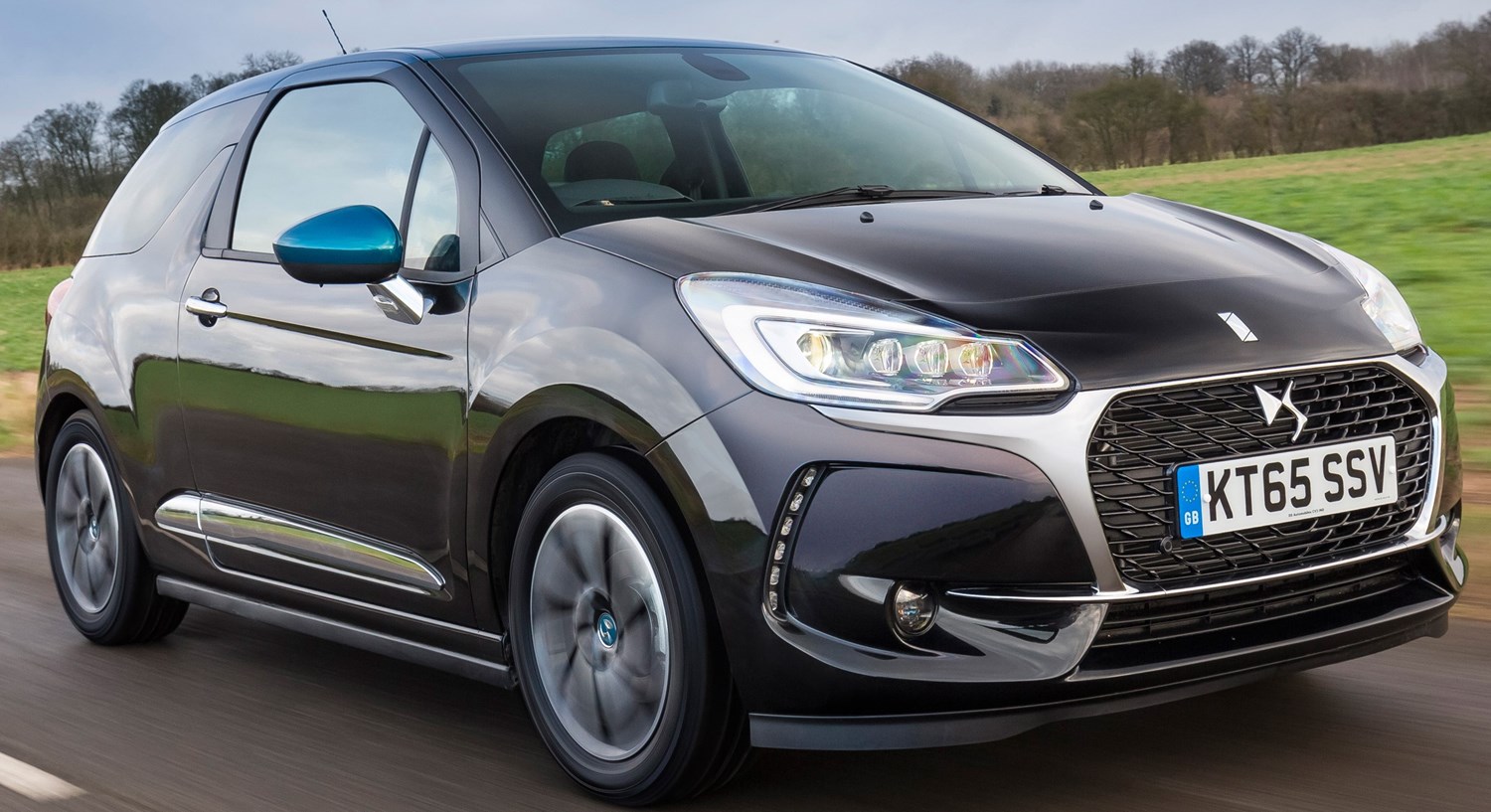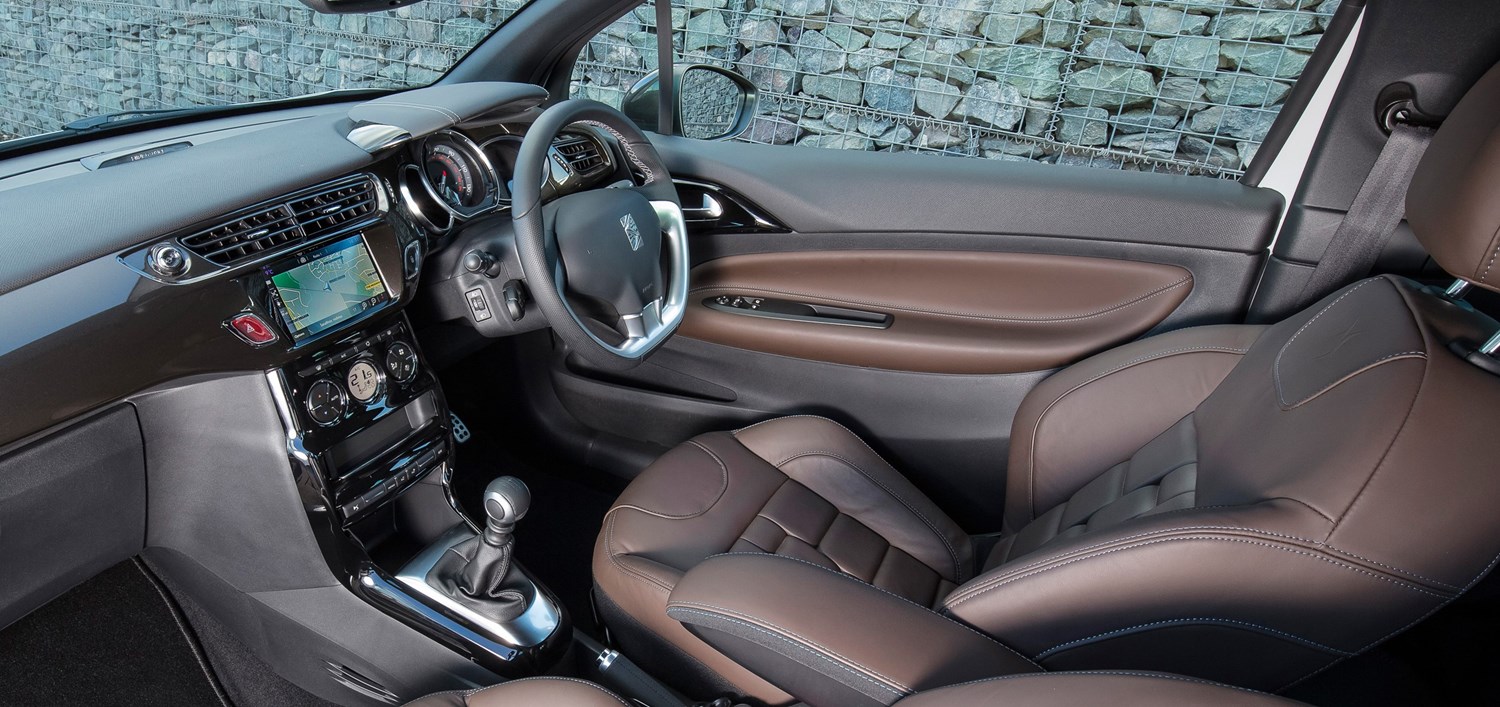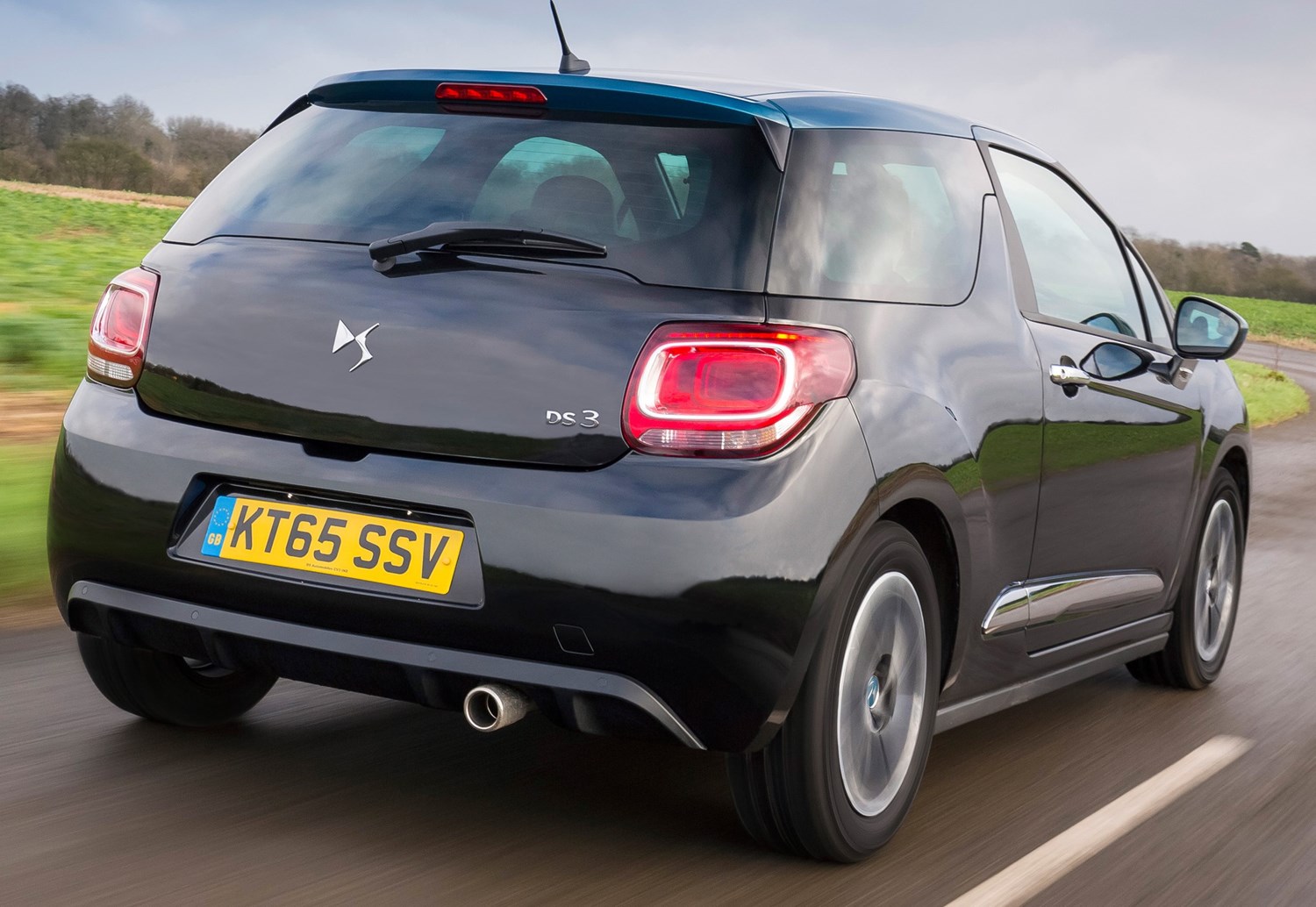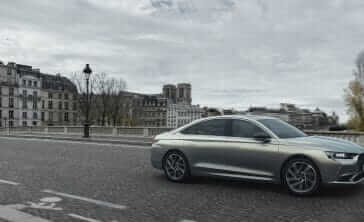Review
The DS 3 was launched way back in 2010 under the Citroen nameplate. At the time, it proved to be an incredibly successful car for the French manufacturer, and a number of facelifts over the years have helped it remain an attractive looking car.
In 2016, the DS brand separated from Citroen, forming the standalone company DS Automobiles. The DS 3 was the model that launched the new premium brand, even though people will still refer to the new DS 3 as a Citroen car.
The DS 3 is available in two bodystyles – a three-door hatchback, as well as a two-door convertible. While this might help DS win favour with its younger, hipper target market, it does mean that the little DS 3 can’t quite compete in the practicality stakes when compared with rivals such as the Mini Hatch.

Latest model
The DS 3 was last updated at the start of 2016, when the DS brand separated itself from the wider Citroen family.
Gone were the iconic Citroen chevrons that had previously adorned the front of earlier DS 3 models, they were instead replaced by more prominent DS badging. The front end was also restyled, featuring a new headlight design as well as a more eye-catching front grille.
Arguably, the most significant additions to the latest model were the new engines. This included the new 128bhp, 1.2-litre three-cylinder petrol as well as a powerful 207bhp, 1.6-litre engine that powered the DS 3 Performance hot hatchback.
Value for money
As DS is pitching the 3 as a more premium offering to go up against the likes of the Audi A1 and Mini Hatch, it is slightly more expensive than the more run-of-the-mill cars in the supermini category. That said, they do come with some slightly more impressive kit as standard.
The entry-level Chic trim level starts at £14,395 and features standard equipment such as a seven-inch touchscreen, air conditioning, DAB radio and Bluetooth connectivity. While used models will certainly be cheaper, the standard of the interior technology won’t quite be the same – especially considering the fact the infotainment system that was updated in 2016 is already starting to feel dated only a year later.
If you’re after features such as satellite navigation, you’ll have to be willing to part with a considerably higher amount of cash than the £14,395 starting price. The cheapest trim level that includes satellite navigation as standard is Performance Line, which costs from £17,895 – a considerable price jump.
As far as the used market is concerned, an older Citroen DS3 in the top-flight Ultra Prestige trim level will cost around £8,000-£9,000 for an example with around 45,000 miles on the clock. While it might not be the latest model of the DS 3, it does come with mod-cons such as satellite navigation, a leather interior and Bluetooth connectivity.
Looks and image
Styling is key with the DS 3 – especially considering the fact that it is intended to appeal to looks-conscious buyers. On the whole, the DS 3 hasn’t changed a huge amount since it was first launched as a Citroen back in 2010.
Thanks to a refresh in 2014, and then the Citroen/DS separation in 2016, the DS 3 still looks like a relatively fresh car that hasn’t dated a great deal.
That said, though, the chintzier front end of the latest model won’t appeal to everyone, and it wouldn’t be unreasonable to say that that the DS 3 was actually a better looking car before the DS Automobiles was established as a brand in its own right.
Next to rivals from other brands, the DS 3 is a fairly attractive looking car. It might not be as fun or funky-looking as the Mini, but it’s certainly a much more interesting proposition than the Audi A1. It also has that more upmarket edge over the likes of the cheaper Vauxhall Adam and Ford Fiesta models.

Space and practicality
Interior space isn’t exactly the DS 3’s strong suit, thanks to the fact that it is available only as a two-door cabriolet or a three-door hatchback. Sure, there’s a decent amount of room in the front seats, but expecting to seat a couple of adults in the back over a long journey would be a rather unreasonable request.
Another foible is the fact that the DS 3 only has a limited number of storage options in the cabin. While the doorbins might be a useable size, and there are some cubby holes in the centre console, the glovebox is tiny and there aren’t any proper cup-holders to speak of.
As far as boot space goes, the DS 3 offers a considerable 285 litres of storage capacity. While it might be slightly short of the space offered by a cheaper Fiesta, it trounces the space available in the boot of a three-door Mini Hatch.
If boot space is really what you’re after, avoid the convertible at all costs, as the traditional boot lid is replaced by a tiny hatch in order to make way for the folding canvas roof.
Engines
The DS 3 is available with a selection of three petrol engines and one diesel engines, all in various states of tune. Manual gearboxes are fitted as standard.
As far as petrol engines go, the entry-level unit is a 1.2-litre, three-cylinder that produces 81bhp. CO2 emissions stand at 107g/km, while it has a claimed fuel consumption figure of 61.4mpg on the combined cycle.
Next is another 1.2-litre three-cylinder petrol, although this time it’s turbocharged. This power plant is available with 109bhp and 128bhp, boasting respective fuel economy figures of 65.7mpg and 62.8mpg. The 109bhp engine is the only one in the DS 3 range available with a six-speed automatic transmission.
The larger 1.6-litre, four-cylinder turbocharged engine crowns the range, and is available with 163bhp. An even more powerful 208bhp version features in the DS 3 Performance hot hatchback, and boasts a 0-60mph sprint time of just 6.3 seconds.
The diesel offering comes in the shape of a 1.6-litre, four-cylinder engine. This is available with either 99bhp or 118bhp. The less-powerful unit promises fuel economy figure of 83.1mpg, while the quicker 118bhp unit manages 78.5mpg. As far as CO2 emissions go, the 99bhp unit produces 87g/km, while the 118bhp engine emits 94g/km.
Running costs
Considering you can have a DS 3 with everything from a frugal diesel all the way up to a high-performance hot-hatch engine, running costs will vary considerably. If out-and-out fuel economy is what you’re after, opt for the 99bhp, 1.6-litre BlueHDI diesel engine.
New DS 3s across the board will be hit rather hard by the road tax changes that will be implemented on April 1 2017. From that date, the 99bhp diesel engine will cost £100 in tax in the first year, and £140 each year afterwards. Currently, it doesn’t qualify for any road tax as it emits less than 100g/km of CO2.
Because of this, used cars – or cars first registered before April 1 – will be a far more appealing proposition, as they will cost far less in VED each year.

Things to look out for
The older Citroen DS3 has been the subject of a number of factory recalls, covering a range of issues such as fuel leaks, oil leaks, a loss of drive and an insecure bonnet latch. In total, the Citroen DS 3 has had 21 recall actions issued against it.
If you’re looking at a used example, it would pay to ensure that all of these issues have been dealt with prior to purchase.
Aside from these recalls, customer reviews generally posit the Citroen DS3 as a reliable and fun-to-drive car, with only a number of trim rattles affecting the ownership experience.
Rivals
The DS 3 goes up against a rather wide proportion of the supermini market. On the one hand, you have the more premium rivals such as the Mini Hatch and the Audi A1, while on the other you have more accessible models such as the Fiat 500 and Ford Fiesta.
Buyers who aren’t too fussed about whether or not their supermini has a premium image or not will likely find the Ford Fiesta to be the best all-round package in this market segment – there is a reason it’s the best-selling car in Britain, after all. There’s a new and improved model coming out in late 2017, too, which will be up to £1,000 cheaper than the model it replaces.
Next to the upmarket rivals, the DS 3 can’t quite compete with the likes of the Mini in terms of how well it drives, it also doesn’t quite have the same loveable-image as the British-built car does either. That said, though, next to the Audi, the DS 3 is the more attractive option.
Depreciation warning
While the DS 3 previously held its value well in the used market, these values are beginning to drop as its immediate rivals up their game.
Unfortunately, rivals such as the Mini Hatch and Audi A1 will both hold stave off depreciation more convincingly than the DS 3, which is starting to feel as though it’s due for an update.



